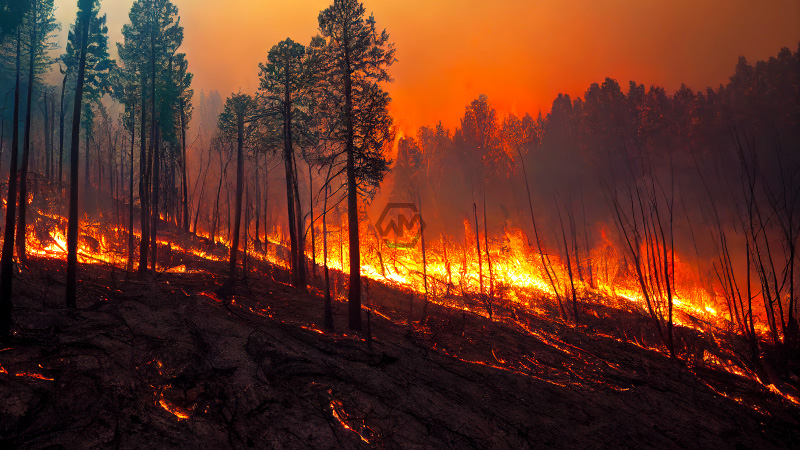An “out-of-control” wildfire known as Eagle Bluff has forced thousands of residents of a Canadian border town to evacuate. Orders for evacuation have been issued for Osoyoos, British Columbia due to the fire, which is estimated to be 2,200 acres on the Canadian side and 2,000 acres on the US side.
According to the British Columbia Wildfire Service, the event is being handled by initial assault crew members, single resources, two helicopters, structure protection workers, and heavy equipment.
Wildfires in Canada
In total, 732 homes have been evacuated, while 2,094 are still under alert. 132 persons have asked for immediate assistance. The evacuated town has a population of about 6,700.
A high of 33C (91F) is anticipated, with the typical July temperature hovering around 30C (86F). The evacuation follows the death of a fireman in British Columbia at the age of 25.
- Eagle Bluff wildfire forces evacuation of thousands in Canadian border town Osoyoos.
- 732 homes evacuated, 2,094 alerts, 132 people seek assistance.
- Wildfires continue growing in New York, causing smoke pollution.
The most recent wildfire in British Columbia, Eagle Bluff, has resulted in a steep slope on a gravel road. Over 1,500 fires have been registered by authorities so far in 2023, including over 360 over the weekend and 191 that are considered “out-of-control.”
Though suppression attempts are being made, the wildfires are still growing. According to the RCMP, smoke from neighboring Canadian wildfires swept across New York, obscuring the city and making breathing difficult.
Last week, fires in Greece and northern Africa caused evacuations from holiday resorts. Rhodes suffered the most, with damaged or inaccessible towns in the south. Experts attribute the increasing number of wildfires to climate change.



